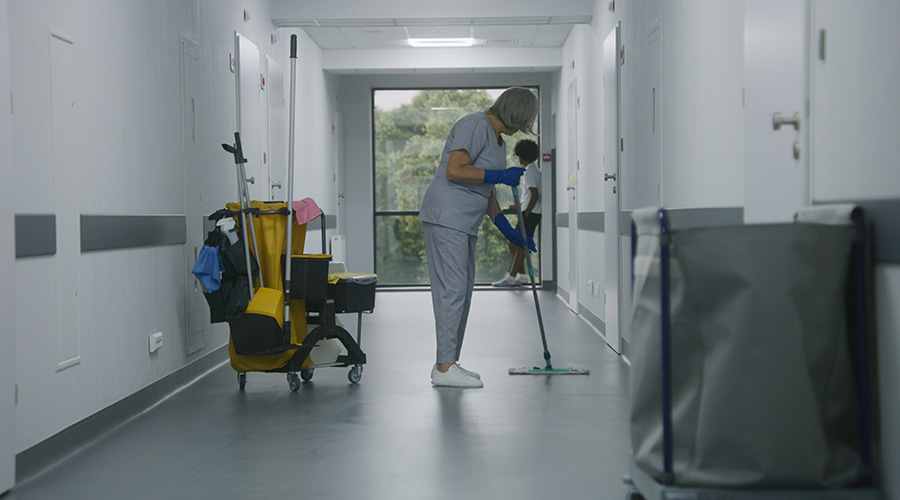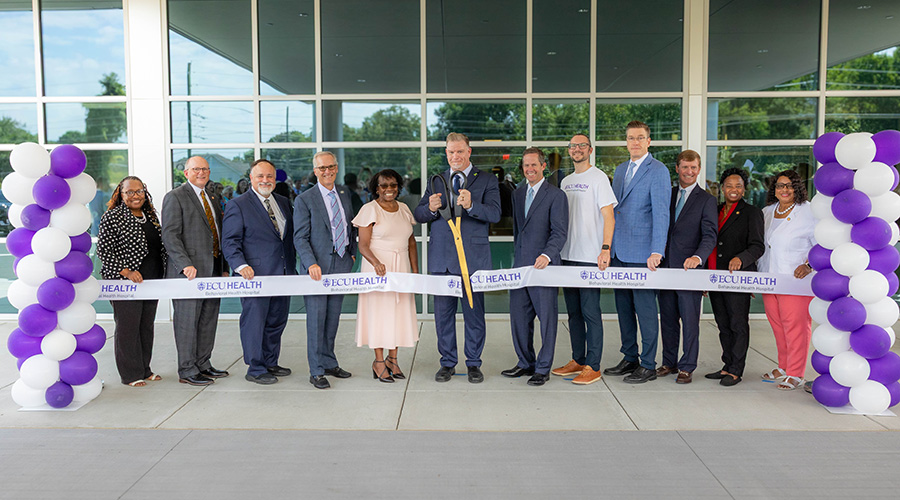Designers face many choices when it comes to upgrading and renovating healthcare facilities. From furniture choices to the way a room is laid out or the paint selection, facility managers must have not only patient care in mind but also staff comfort and satisfaction.
Paint colors are often where managers can go wrong. Hospitals and other healthcare facilities can be stressful environments for many people, so it is important to make it feel like a sanctuary to patients. Bright colors can be off-putting for some because they can hurt the eyes or be distracting. More designers are starting to lean toward colors that draw on nature and organic materials, allowing for the use of more warm neutrals, watery blues and soft greens. This approach can spark joy for patients, residents and visitors because it breaks up an otherwise sterile environment.
“Color can enhance a sense of well-being on both a physical and mental level,” says Erika Woelfel, vice president of color and creative services with Behr Paint Co. “Soft greens and blues can usher in a sense of peace to patients and their family members who need respite and calm during recovery. The restorative power of color in design is often thought of for patients, but it can equally impact those working in hospitals and rehabilitation facilities. Essential healthcare workers benefit from the stress-relieving qualities of those soft greens and blues. Those hues can provide relief during a long shift or calm during high-stress situations. Warm neutrals are another great way to create a restorative, timeless environment with paint color. Those colors feel like a comforting hug.”
While color is an important factor when choosing paints, facilities managers need to consider other elements. Paint in high-touch point areas can easily chip away, and extra cleaning can make it fade away faster.
Still, minimizing cost while managing long-term upkeep, durability and the health and safety of a facility is a balance that managers need to achieve. Choosing paints that require extra work and frequent maintenance but cost less is not something that’s worth risking. Managers should instead prioritize durability, cleanability, low odor and low or zero volatile organic compounds (VOC) to ensure the safety of the painter and those occupying the spaces.
“Paint product selection is so important for the longevity of the finish,” says Paul Baik, product manager with Behr Paint Co. “Cleanliness is, of course, of the utmost concern in healthcare facilities, so facilities managers should be looking at a product with burnish resistance that can hold up to frequent cleaning without losing gloss or sheen. Healthcare facilities have high-traffic circulation spaces, so they also need a product that can hold up performance. Patient rooms and spaces like waiting rooms not only get a lot of traffic, but they also are in regular contact with rolling furniture, equipment and human touch.”
As sustainability begins to more closely align with the values of hospitals and other healthcare facilities, managers will also have to take that issue into consideration when choosing products. Paints have made strides in recent years to become more eco-friendly, lowering the amount of VOCs to almost nothing to benefit the environment and those occupying the space. In buildings such as hospitals, it is especially crucial to use the most environmentally friendly paints.
“VOCs can impact the respiratory health and comfort of patients, particularly those with asthma or respiratory ailments,” Baik says. “They can also make their way into the bloodstream and cause dizziness, headaches and more severe reactions. A healthcare facility should be particularly sensitive to VOC content with not only the health of the patients in mind, but the health and comfort of staff, as well.”
Mackenna Moralez is the assistant editor with Healthcare Facilities Today

 ISSA Introduces Healthcare Platform to Advance Safer, Cleaner Patient Environments
ISSA Introduces Healthcare Platform to Advance Safer, Cleaner Patient Environments Third-Party Tracking Settlement is a Compliance Wake-Up Call for Healthcare Facilities Managers
Third-Party Tracking Settlement is a Compliance Wake-Up Call for Healthcare Facilities Managers ECU Health Behavioral Health Hospital Hosts Ribbon-Cutting Ceremony for New Facility
ECU Health Behavioral Health Hospital Hosts Ribbon-Cutting Ceremony for New Facility Aspire Rural Health System Reports Data Security Incident
Aspire Rural Health System Reports Data Security Incident Fatal Flaws: Strategies for Active Attackers
Fatal Flaws: Strategies for Active Attackers